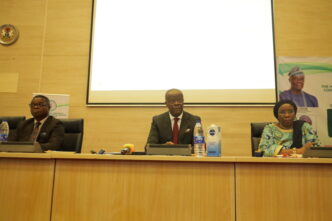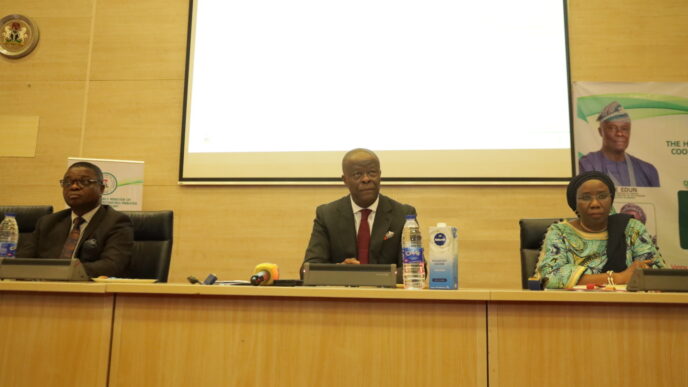The contributory pension scheme (CPS) stands as a cornerstone in Nigeria’s efforts to secure retirement benefits for its citizens. The primary goal of the Pension Reform Act 2014 (PRA 2014) is to ensure individuals save adequately for their post-employment years. Central to this scheme is the provision for lump sum withdrawals upon retirement, aimed at providing retirees with financial stability while receiving periodic pensions.
Section 7 of the PRA 2014 outlines the options available to a retirement savings account (RSA) holder upon retirement or attaining 50 years of age. The first option is the withdrawal of a lump sum from the total amount credited to his RSA provided that the amount left after the lump sum withdrawal shall be sufficient to procure programmed fund withdrawals or annuity for life in accordance with extant guidelines issued by the commission, from time to time.
The retiree also has the option of programmed monthly or quarterly withdrawals or a retiree life annuity (RLA) purchased from a life insurance company with monthly or quarterly payments.
DETERMINING LUMP SUM
Advertisement
There is a misconception that the lump sum is fixed at 25 percent of a retiree’s RSA balance. This is far from the reality. In line with the provisions of the PRA 2014, the National Pension Commission (PenCom) issued a revised regulation on the administration of retirement and terminal benefits. The regulation established a standard retirement benefit computation (SRBC) template, which is an automated template developed by PenCom for PFAs to calculate retirement benefits such as lump sum and monthly/quarterly pension, using age, gender, final salary, and the RSA balance. This template is what generates the amount of pension savings a retiree can withdraw as lump sum while the rest is spread for life as periodic pension.
Significantly, since the lump sum is not fixed, the retiree has a right to negotiate and choose to collect either the maximum lump sum due to him/her or take a minimum lump sum to boost his monthly or quarterly pension.
Under the CPS framework, retirees must maintain a balance in their RSAs sufficient to secure monthly pensions equivalent to 50 perecnt of their last salary. The remaining funds can be withdrawn as a lump sum, offering flexibility while ensuring long-term financial security during retirement.
Advertisement
The template permits an RSA holder to withdraw a lump sum ranging from a minimum of 25 percent to a maximum of 50 percent of the RSA balance. However, the monthly pension must first be calculated to meet the 50 percent replacement ratio of the retiree’s last salary.
If a retiree’s RSA balance is insufficient to provide a 50 percent replacement ratio of their final pay as a monthly pension, PenCom’s regulation allows the RSA holder to withdraw the minimum permitted lump sum of 25 percent of their RSA balance.
ADDITIONAL LUMP SUM
Once a retiree starts receiving pension via programmed withdrawal or retiree life annuity, the retiree is not allowed to access an additional lump sum after the payment of initial lump sum. However, where there are additional inflows of funds into the RSA from the employer, the retiree can receive additional lump sum.
Advertisement
The additional remittances shall first be applied to augment pension up to 50 percent of the retiree’s final salary and the balance may be paid out as lump sum. Where the retiree’s pension is already up to 50 percent of final salary, the retiree may choose to collect the entire additional remittances as lump sum.
INVERSE RELATIONSHIP BETWEEN PENSION AND LUMP SUM
Pension and lump sum withdrawals have an inverse relationship: the higher the pension, the lower the lump sum, and vice versa. RSA holders who withdraw a larger lump sum receive a lower monthly pension, depending on their financial needs.
It is important to note that the primary objective of the CPS is to replace a retiree’s salary with periodic pensions. Consequently, some retirees choose not to withdraw a lump sum in favour of securing higher monthly pensions. This approach ensures a more stable and consistent income stream during retirement.
Advertisement
Experience has shown that retirees who opt for large lump sum withdrawals often face financial challenges post-retirement. Many of these retirees exhaust these funds prematurely, leaving themselves with inadequate pension income.
Some experts had suggested that RSA holders should be allowed to take up to 75% of their pension savings as lump sum. Such a suggestion, which could deplete the RSA, has constitutional implications under Section 173 of the 1999 Constitution.
Advertisement
This section guarantees pension rights to public officers, necessitating that pension funds are not entirely withdrawn as lump sums, thereby converting pension funds into a provident fund. This safeguard ensures retirees continue to receive periodic pensions crucial for their livelihoods.
Considering these challenges, PenCom encourages employers to implement Section 4 (4) (a) of the PRA 2014, which allows for the payment of additional benefits upon retirement, supplementing lump sum withdrawals and potentially enhancing retirees’ financial positions post-employment.
Advertisement
In conclusion, it is important that RSA holders preparing for retirement understand the balance between lump sum withdrawals and sustainable pension income.
Striking a balance in withdrawal options can ensure retirees enjoy a dignified and financially secure post-work life under the CPS. This underscores the importance of informed decision-making in pension withdrawals, advocating for a balanced approach that respects retirees’ financial needs.
Advertisement
Based on information by the National Pension Commission (PenCom).
Add a comment










